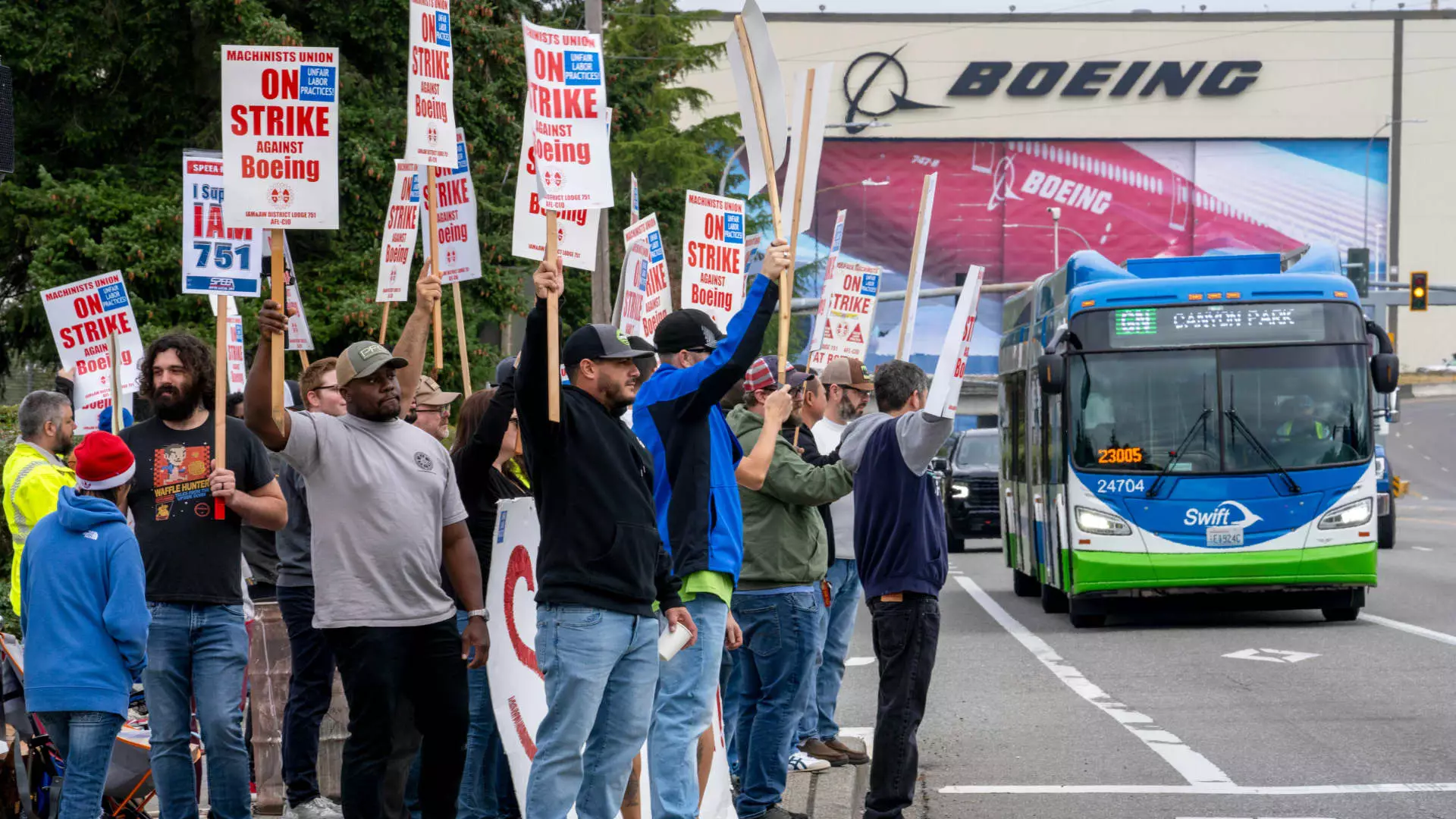In the face of a significant machinists’ strike and mounting financial challenges, Boeing has announced a series of temporary furloughs impacting thousands of executives, managers, and other staff members across the United States. This decision, articulated by CEO Kelly Ortberg, underscores the intense pressures the aerospace giant is currently experiencing.
The strike commenced when over 30,000 machinists, primarily located in the Seattle area and Oregon, demonstrably rejected a proposed labor contract, with a striking 96% opting for a walkout. Despite Boeing’s efforts to offer a 25% wage increase, the machinists felt the proposal failed to address the rising cost of living in their region, alongside unresolved pension issues. This dissatisfaction reflects broader trends in labor relations where workers are increasingly demanding compensation that keeps pace with inflation and addresses job security.
Impact on Operations
As a direct result of the ongoing labor disputes, Boeing has decided to implement furloughs, resulting in employees taking one week off every four weeks until the strike concludes. This measure highlights the company’s strategic attempt to safeguard its financial future amidst a declining workforce and possible production delays. Ortberg emphasized that the decision, while difficult, is essential to navigating these tumultuous times and reaffirmed a commitment to transparency with their employees.
Compounding the effects of the strike, Boeing’s Chief Financial Officer, Brian West, has indicated that the strike’s duration will critically influence the company’s financial health. In an attempt to mitigate costs, they plan to freeze hiring and temporarily release non-essential contractors. With an alarming $60 billion in debt and a tarnished reputation following safety incidents, Boeing’s current stance illustrates the balancing act between maintaining operational integrity and controlling financial liabilities.
Despite these extensive furloughs and the looming uncertainty that surrounds their workforce, Boeing has assured stakeholders that they will prioritize operations deemed critical. This includes activities connected to safety, quality assurance, customer support, and key certification programs. Notably, the production of the 787 Dreamliner, manufactured in a non-union facility in South Carolina, will proceed as planned, illustrating a strategic differentiation in their operational capability.
As Boeing navigates these challenges, the future remains uncertain. The ongoing strike coupled with past safety incidents leaves the company at a crossroads. The ability to resolve labor disputes and address employee concerns will be vital in restoring trust and stability within the workforce. Success in these endeavors will not only impact internal operations but could potentially shape the broader narrative of labor relations in the aerospace sector as companies strive to balance employee satisfaction with economic sustainability.
In response to a myriad of challenges, Boeing’s decision to furlough thousands of employees serves as a critical reminder of the intricate relationships between labor, management, and economic realities. The company’s journey through these turbulent waters will require strategic foresight and a commitment to addressing the gripes of its workforce while attempting to stabilize in a competitive and financially volatile industry.


Leave a Reply